NEST 2.0 – CLIMATE
Sunlight hours analysis
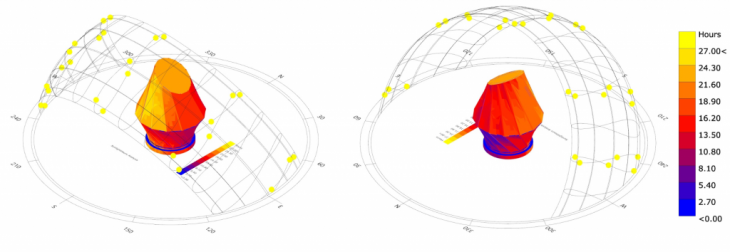
The lower part of the building doesn’t get a lot of sunlight and therefore doesn’t require a lot of shading strategies in the envelope. It’s ideal for bigger openings and permanent ventilation strategies. The upper part, specially the oculus, require more shading in the summer and could be explored for natural heating in the winter.
Wind Analysis
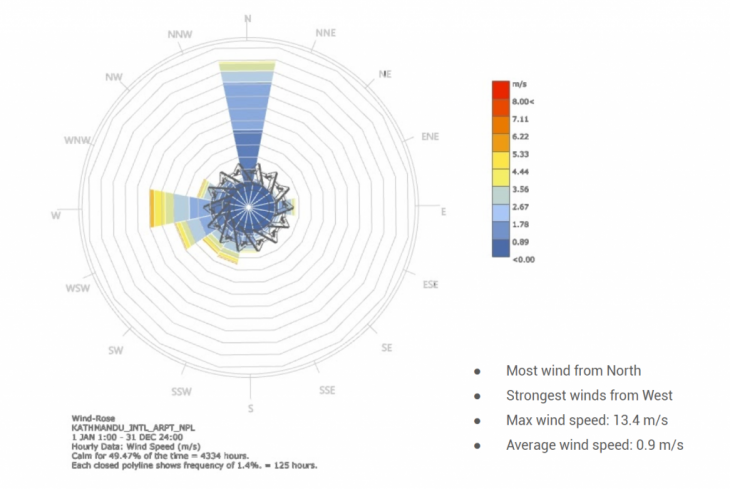
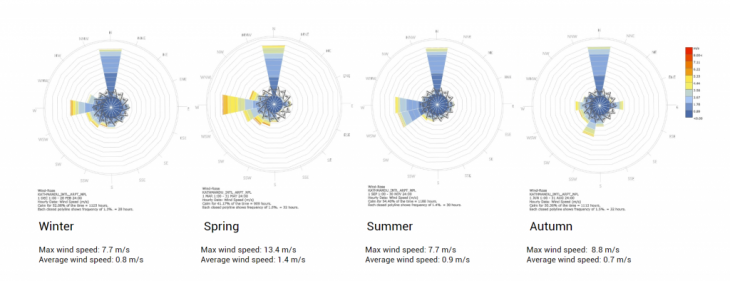
Although the wind is usually weak, there are less frequent but strong winds in spring. The envelope strategy must shield against possible strong winds and deal with the resulting uplift.
Changes from original design
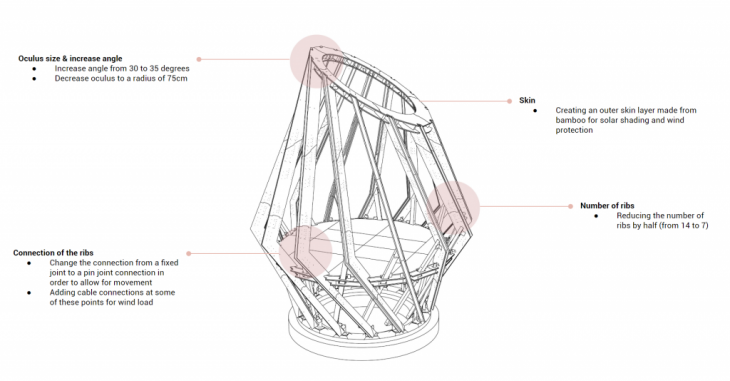
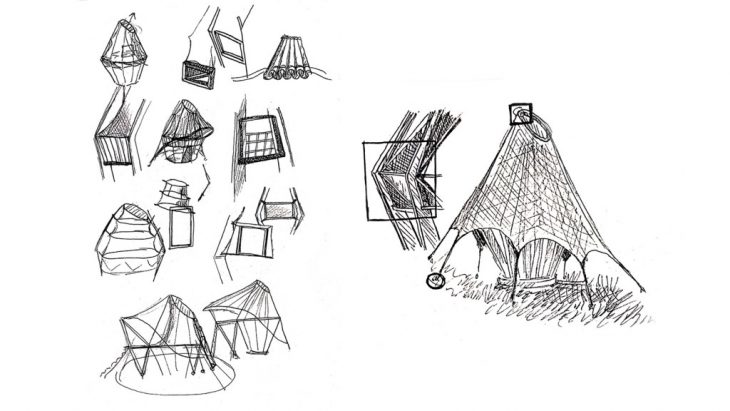
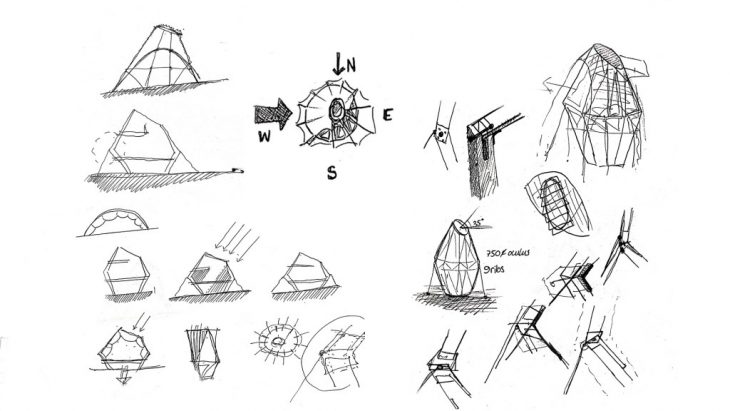
Design
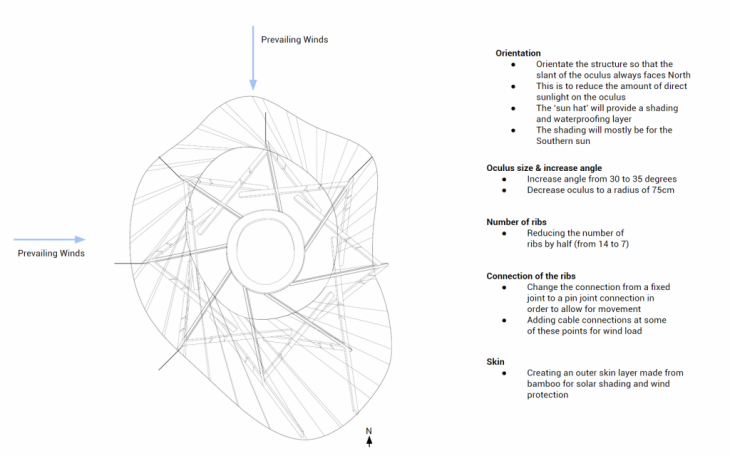
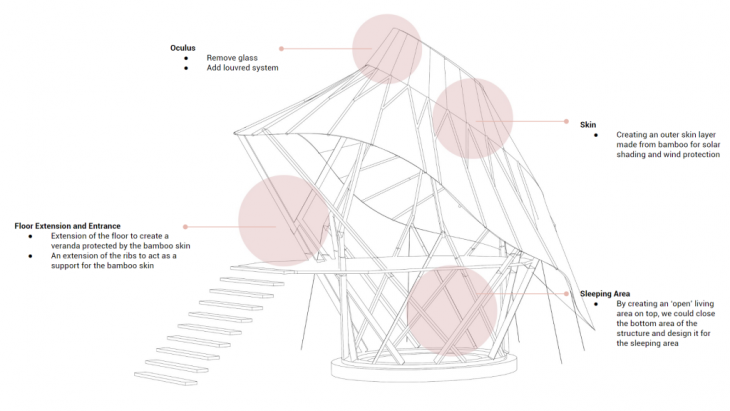
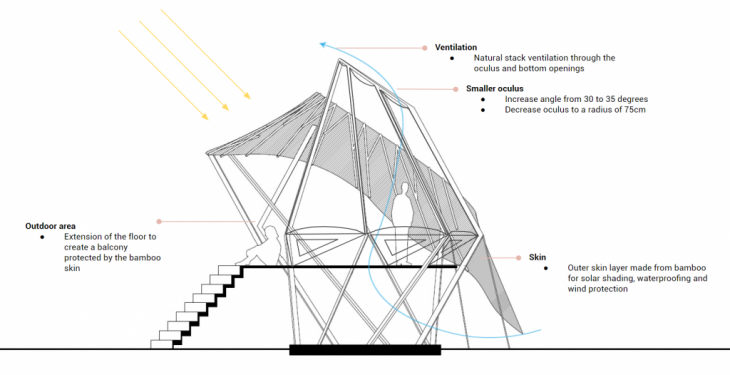
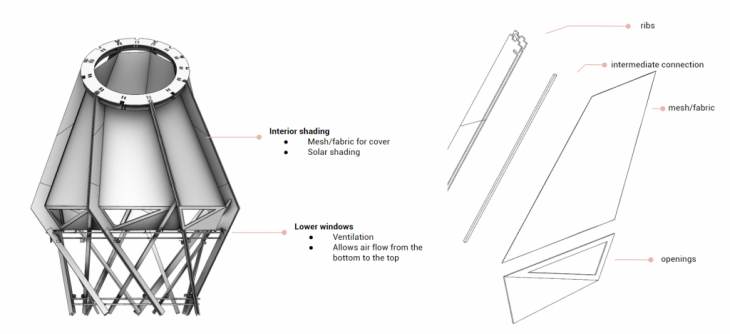
Materiality – Skin Strategies Options
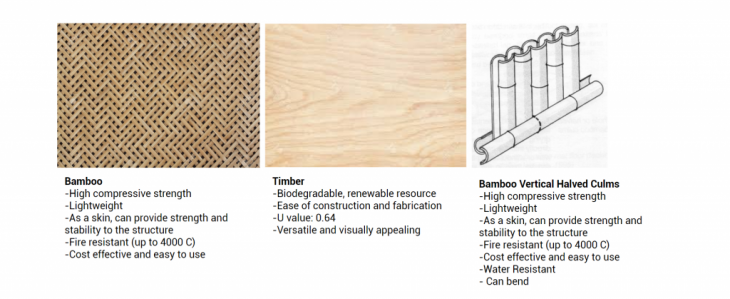
Connections
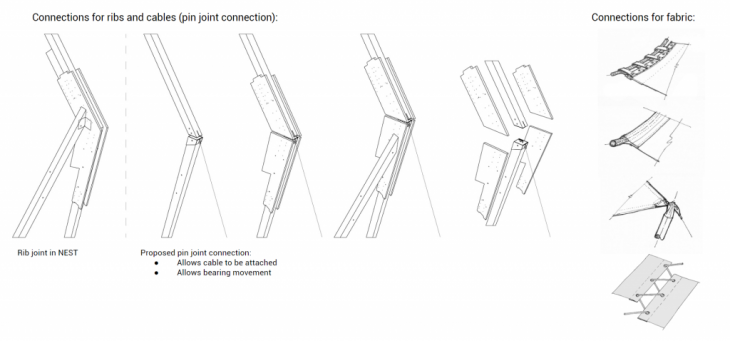
Structural Analysis
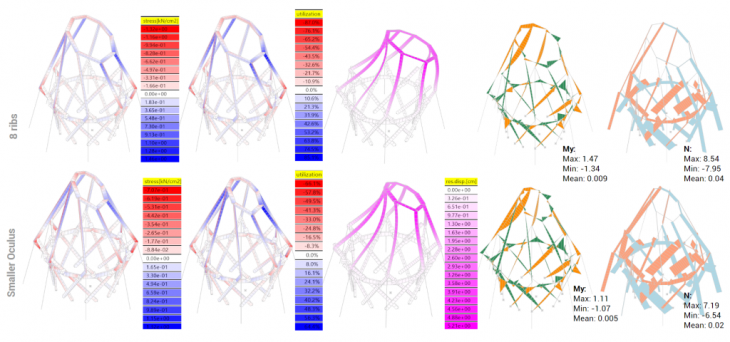
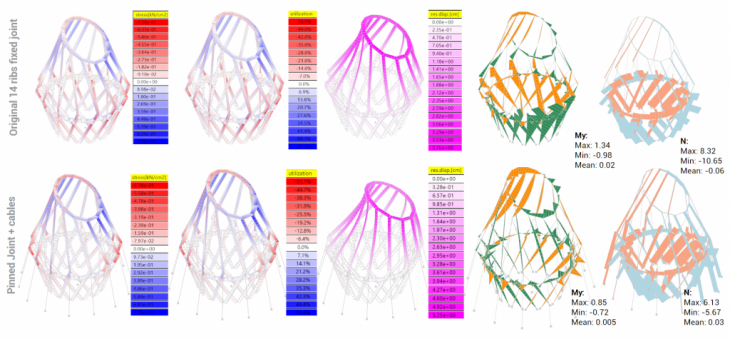
Models
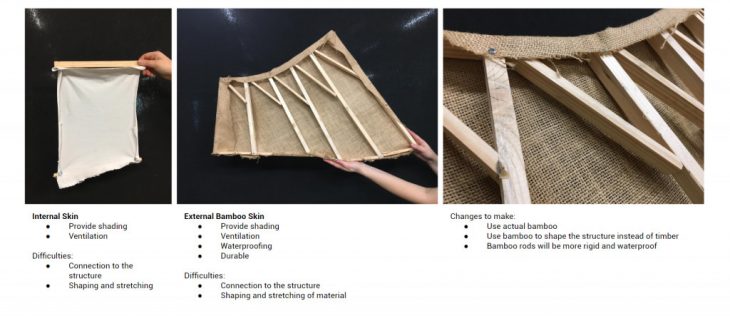
Data Informed Structures / Nest 2.0 – Climate is a project of IAAC, Institute for Advanced Architecture of Catalonia developed Master in Advanced Architecture in 2019/2020 by:
Students: Brenda Freitas, Frank Feng, Hanna Lepperod, Ilaena Napier
Faculty: Manja van de Worp, Raimund Krenmueller